60+ Essential Marketing Budget Statistics (2024)
February 14, 2024
February 14, 2024

Marketing is essential for any small business that wants to grow and succeed. We surveyed our large audience and analyzed over a dozen high-impact reports to establish how small businesses approach their marketing.
Our original surveys were presented as multiple-choice questions; each received a minimum of 500 unique responses.
Keep reading for more high-impact marketing statistics, plus cutting-edge marketing strategies you can implement right now.
There are over 33 million businesses in the U.S., and they spend a combined $481 billion a year on marketing. This means the average American business spends $14,575 on marketing annually.
But this is a top-heavy figure. Most marketing spending comes from 14.9% to 18% of all businesses (from sole proprietorships to publicly held companies). By comparison, 63.4% of small businesses spend less than $1,000 annually.
The average business spends 12.3% percent of revenue on marketing, with the median rate coming in at 10%.
On average, companies spend 53.4% of marketing dollars on their digital marketing budget. Small businesses spend 46.6% of marketing budgets on traditional advertising.
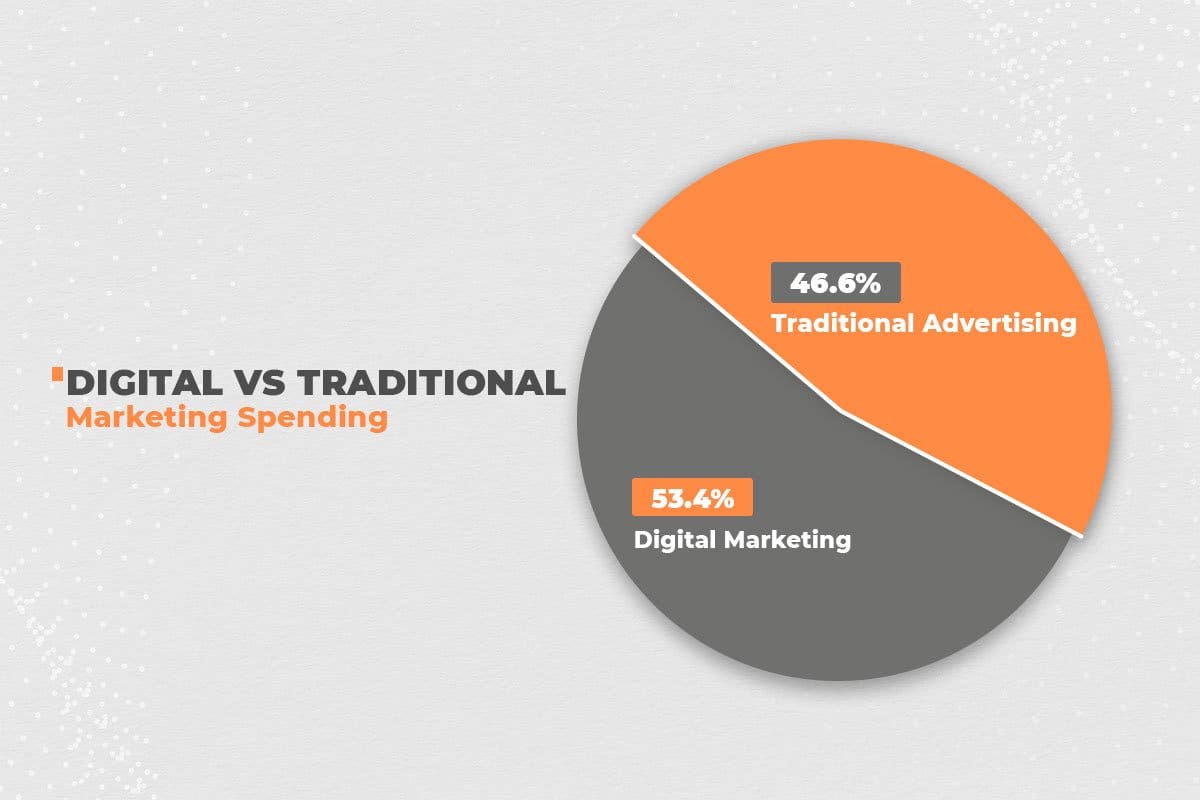
Here’s a breakdown by industry:
Research-Based Recommendation: Companies should spend between 39.3% and 75.5% of their marketing budgets on digital marketing and 24.5% to 60.7% on traditional marketing, depending on their industry.
Professional marketers who responded to Gartner’s 2023 CMO Spend and Strategy Survey intended to spend approximately equal portions of their marketing budgets on labor, paid media, technology, and outsourcing, as seen below:
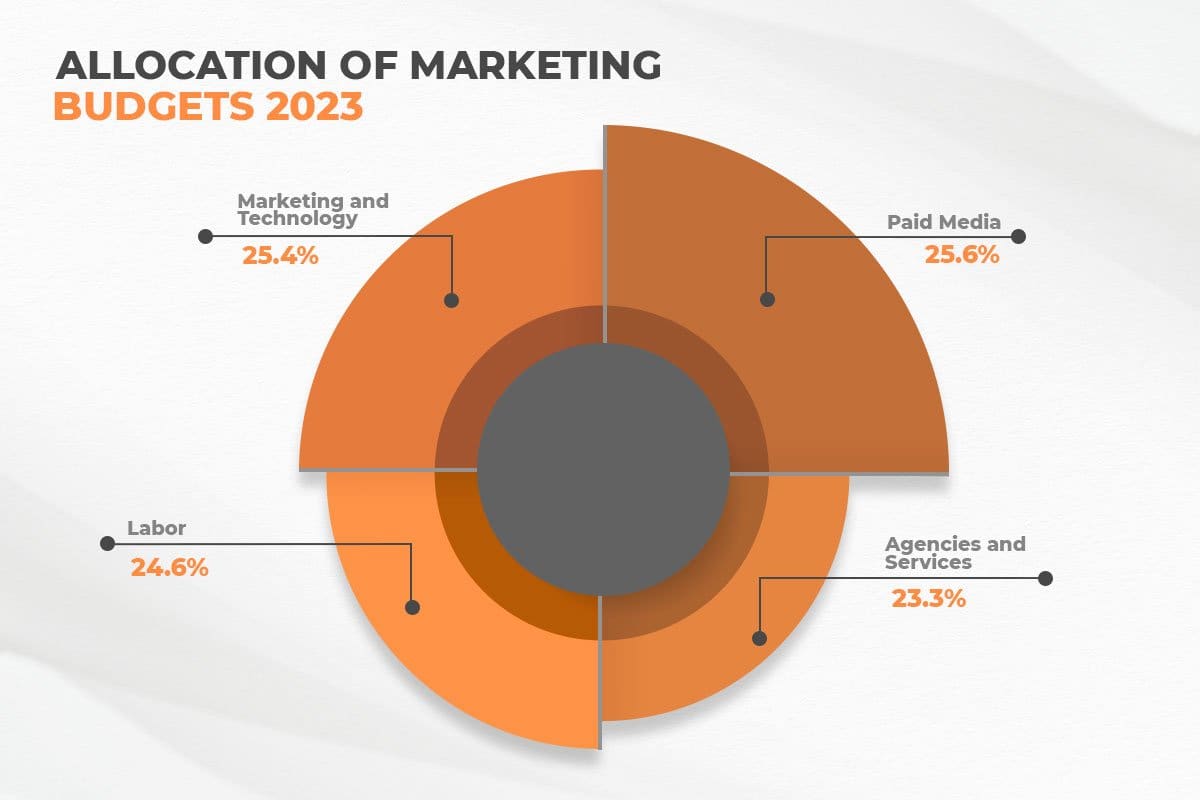
Paid media spending makes up the largest portion of marketing budgets, with 25.6%, but even the smallest portion is only 2.3% behind.
We surveyed 1,800 UpFlip viewers about how much they spend on marketing per year.

That 85.1% of businesses spend less than $10,000 on marketing isn’t surprising. According to the U.S. Small Business Administration’s Office of Advocacy, 99.99% of U.S. businesses qualify as small businesses.
Research Opportunity: Further research should be done to determine 1) How marketing expenditure correlates to revenue and 2) How marketing expenditure impacts revenue per employee.
Social media marketing uses a combination of organic marketing strategies and paid marketing strategies to build relationships with customers on platforms like Facebook, Instagram, and TikTok.
Our survey found that 60% of small business owners prefer social media marketing over Google Ads, SEO/SEM, print advertising, and content marketing.

While social media marketing dominates the battle of preference, 24% of small business owners say that it’s their least successful marketing strategy.

Research Opportunity: Further research should be performed to find what sets successful social media campaigns apart from unsuccessful campaigns.
Content marketing is a strategy that involves creating and sharing blogs, videos, and other useful content to drive awareness of products and services. This strategy can be highly successful because it helps develop authority with both potential customers and search engines.
Just 6% of businesses surveyed use content marketing, but only 7% of businesses surveyed found content marketing to be unsuccessful.
These numbers indicate that small business owners can benefit tremendously by focusing on producing new content.
Research-Based Recommendation: We suggest spending at least a couple of days each month creating new content and scheduling social media posts. If you aren’t confident doing this yourself and don’t have an employee you can assign it to, consider contracting a freelance content creator.
Business owners can choose numerous forms of paid advertisement, but some platforms drive results better than others.
44% of small business owners prefer using Google Ads over Facebook/Instagram ads (32%), YouTube ads (13%), or TikTok ads (11%).
17% of small business owners prefer Google Ads over other forms of marketing, and only 13% of small businesses are not satisfied with the performance of Google Ads.
Research-Based Recommendation: Start by spending your ad budget on Google Ads, then learn how to optimize other ad platforms.
Small business owners need to break their marketing budgets down by campaign. These numbers will help you get a feel for the real-world cost of different marketing tactics and tools.
For social media, paid ads, and traditional advertising, you may want to break the marketing budget into specific marketing channels. We recommend utilizing this marketing budget template.
Our surveys found that online businesses are 75% more likely to increase their marketing budgets.

This is consistent with consumer trends, as online sales are increasing their overall percentage of sales by approximately 1% per year.
Research-Based Recommendation: Even if you’re saving money by decreasing your digital marketing budget, foregoing an online marketing strategy may mean poor performance in the future. We recommend maintaining a digital marketing budget comparable to industry benchmarks.
One of the metrics small businesses use is return on ad spend (ROAS), which is defined as revenue from ads divided by cost of ads, but many business owners implement a modified ROAS calculation that uses this formula:
(Revenue – Cost of Good Sold)/Cost of Ads
893 people responded to our questions about their ROAS. Here’s what the survey showed…
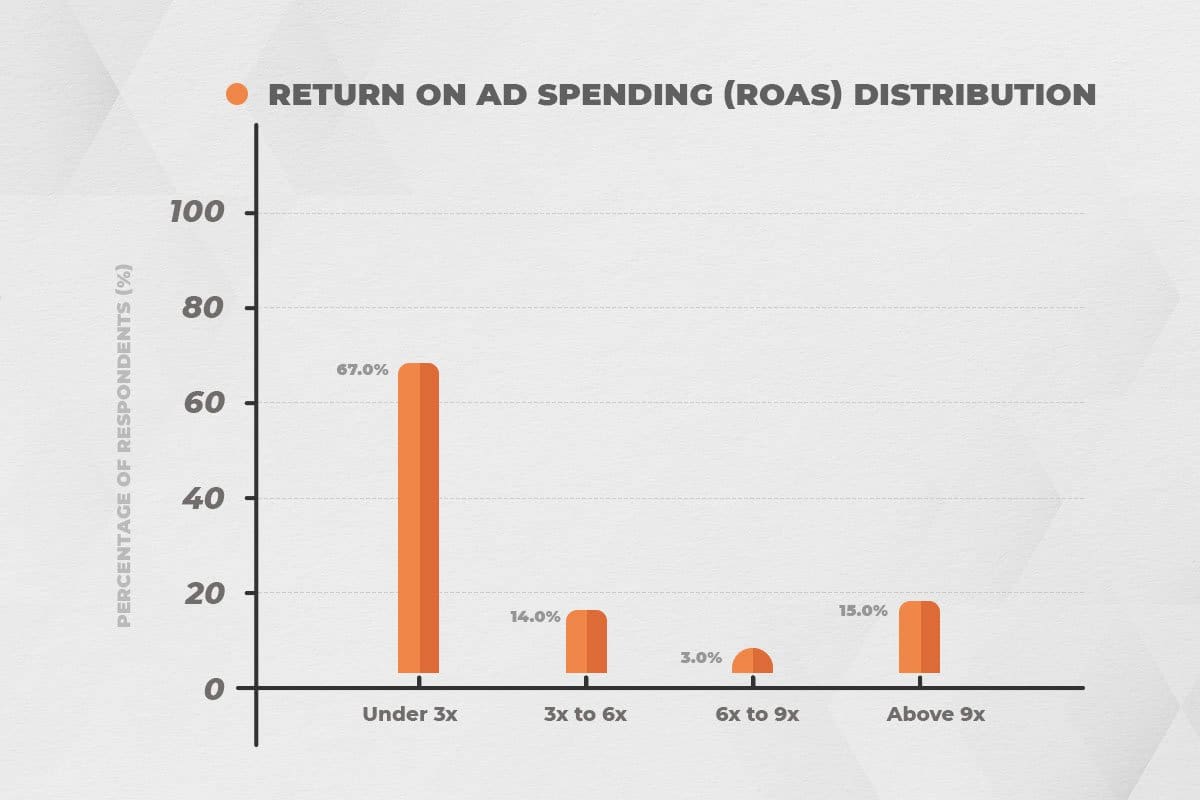
Some of our original survey respondents provided more detailed information that you can use to determine what you might aim to spend in your industry.
As stated earlier, 70.6% of online businesses are either increasing their marketing budgets or keeping them at the same level, while 60% of businesses with less than 10% of revenue from online sales are decreasing their marketing spending.
@bobsimpson9228 told us:
Learn more about how small business owners start online businesses.
@josh3.064 gave an example of what to expect in car detailing:
Want to learn more about car detailing? See our comprehensive blog and YouTube video.
@allaboutdiy1375 provided information about car shops:
Want to know more about automotive repair? Check out our how-to blog and in-depth interview. @kdp9607 had the best performance with a nearly 22x return on ad spend in the painting industry. @stoneroastery disclosed: Coffee mogul Wes Herman confessed that 19-location Woods Coffee doesn’t actually spend a lot on marketing. Read about how he runs his coffee shops. Growth in customer relationship management, customer experience spending, and brand building is expected to slow by 50% in the next year. There are some exceptions: These three industries are spending nearly double what other industries are spending. Interestingly, marketing consumer goods costs 36.5% less than marketing services. As such, the U.S. Small Business Administration (SBA) suggests different marketing budgets for different types of small businesses. Research-Based Recommendation: Effectively, this shows that small business owners should expect to spend between 10% and 40% more when they are selling services instead of a product. Business-to-consumer companies spend 52% to 71% more to earn the same revenue as B2B companies. This may be because since the 1970s, productivity has grown eight times as fast as wages. GDP has increased by a multiple of 8.7x before inflation. Businesses have more spending power today than they did in the past, but consumers have similar spending power than they did in 1979. Research-Based Recommendation: Marketing a B2B product is the least costly form of marketing. If you’re trying to decide on a type of business to start or exploring new ways to increase revenue, consider selling products to companies instead of individual consumers to maximize your marketing effectiveness. These statistics were gathered by reviewing literature, surveying our audience, and using the combined statistics to help small business owners understand the marketing landscape and highlight opportunities to improve their marketing results. We studied numerous reports and blogs on marketing statistics, marketing budgets, and other economic data to gather statistics obtained and published by other companies and organizations. We used these statistics to better understand how UpFlippers’ survey responses compare to the findings of larger companies and organizations regularly published in annual reports and other research. UpFlip surveys were conducted on our YouTube channel. Due to the limited nature of YouTube surveys, it is impossible to tie every answer to a specific respondent unless they leave additional comments. Nor could we establish whether there were correlations between ad spending and successful results with each type of marketing expense. In the future, we will update this piece with long-form surveys that will provide additional insights into how small businesses use their marketing. In some scenarios, we compared two statistics to gain more insight into a subject. Combining two statistics was useful for gaining insights about content marketing being underutilized, selling products requiring less marketing than selling services, and B2B marketing being more cost-effective than marketing to consumers. Operating based on these conclusions may have different results for different companies, and they should always use metrics to measure the success of their results. These small business marketing budget statistics can help small business owners create an informed marketing budget, especially when you keep in mind that online marketing is steadily gaining traction over traditional marketing channels like print and radio advertising. Whether you’re a small business owner or work with them, you can use the information in this report and our marketing budget template to create a balanced small business budget. What’s the biggest pain point in creating your marketing budget breakdown, and what new marketing strategy are you going to try next?House Painting Business Marketing
Coffee Shop Advertising
A Reduction in Long-Term Marketing
Marketing Goods vs. Marketing Services
B2C vs. B2B
Methodology
Literature Review
UpFlip Surveys
Combining Statistics
Closing
Brandon Boushy
 Starting a food truck business is as simple as following these eleven steps:
Starting a food truck business is as simple as following these eleven steps:
 You might wonder, “What is the best food to serve in a food truck?”
You should look for the intersection between what you’re good at cooking and what the area needs.
According to other food truck operators, those choosing which food to serve for their food truck should heed this advice: do one thing and do it well. Make it a quality product and keep it very, very simple.
You might wonder, “What is the best food to serve in a food truck?”
You should look for the intersection between what you’re good at cooking and what the area needs.
According to other food truck operators, those choosing which food to serve for their food truck should heed this advice: do one thing and do it well. Make it a quality product and keep it very, very simple.
 Over the past decade or more, food trucks have become a viable, reputable business option that has gone far beyond the tired pretzel or questionable hot dog vendor of long ago. In fact, food trucks have now become a $1.2 billion industry annually.
Local profit figures vary greatly based on location, products offered, and other factors. However, according to IBISWorld, profit for a food truck may be around 7.7% of your entire revenue, after accounting for overhead costs and wages. That means a food truck making $400,000 in sales each year would pull in just over $30,000 in profit.
So, you aren't necessarily going to get rich quick as a food truck entrepreneur. But with determination (and some hard work) you can make a decent living and own your own profitable business!
Of course, all of this is after you break even in your business, which is when your business finally stops costing you money and becomes profitable. The Vet Chef reached this at around the one-year mark, which is fairly typical. You may need to plan for longer if your starting costs are high.
Over the past decade or more, food trucks have become a viable, reputable business option that has gone far beyond the tired pretzel or questionable hot dog vendor of long ago. In fact, food trucks have now become a $1.2 billion industry annually.
Local profit figures vary greatly based on location, products offered, and other factors. However, according to IBISWorld, profit for a food truck may be around 7.7% of your entire revenue, after accounting for overhead costs and wages. That means a food truck making $400,000 in sales each year would pull in just over $30,000 in profit.
So, you aren't necessarily going to get rich quick as a food truck entrepreneur. But with determination (and some hard work) you can make a decent living and own your own profitable business!
Of course, all of this is after you break even in your business, which is when your business finally stops costing you money and becomes profitable. The Vet Chef reached this at around the one-year mark, which is fairly typical. You may need to plan for longer if your starting costs are high.
 If you're one of those lucky people with tens of thousands of extra dollars lying around to start a business, that's great! But otherwise, you may need to figure out how to finance your food truck business until it provides more cash flow.
If you're one of those lucky people with tens of thousands of extra dollars lying around to start a business, that's great! But otherwise, you may need to figure out how to finance your food truck business until it provides more cash flow.
 As with any business, you will need to make sure your food truck complies with all of the local government standards regarding permits and licenses. This is a very important step when you learn how to start a food truck. These may range from permission to run a business to food-handling certifications and will change based on state and local regulations.
Similar to the advice of other food truck owners, Kyle's advice is that potential owners of food trucks should contact their local health department right away, and they'll know how to proceed from there. He says to expect approximately 6 months from the time you make your first contact until you can get up and running.
Entrepreneur.com parallels Kyle's advice, noting that your local department of health should be first on your list of contacts and then go from there.
Below is a general idea of what you might need, but, of course, it is necessary to find out exactly what is needed for starting a food truck in your particular location.
As with any business, you will need to make sure your food truck complies with all of the local government standards regarding permits and licenses. This is a very important step when you learn how to start a food truck. These may range from permission to run a business to food-handling certifications and will change based on state and local regulations.
Similar to the advice of other food truck owners, Kyle's advice is that potential owners of food trucks should contact their local health department right away, and they'll know how to proceed from there. He says to expect approximately 6 months from the time you make your first contact until you can get up and running.
Entrepreneur.com parallels Kyle's advice, noting that your local department of health should be first on your list of contacts and then go from there.
Below is a general idea of what you might need, but, of course, it is necessary to find out exactly what is needed for starting a food truck in your particular location.
 Now comes the exciting (and perhaps a bit scary) part! Buying your truck and outfitting it for your needs is critical to the success of your food truck business.
Now comes the exciting (and perhaps a bit scary) part! Buying your truck and outfitting it for your needs is critical to the success of your food truck business.
 While your food truck is in the midst of being purchased or retro-fitted, you should be making contact with the vendors and suppliers you plan to use to source your food. You may choose these based upon quality, price, and sustainability factors.
You may want to start by asking other food trucks and similar concept restaurants who their vendors are. Restaurant industry trade shows may also reveal vendors you didn't know were out there.
Of course, a quick online search might reveal dozens of restaurant supply chains, but many small business owners prefer to deal with local suppliers.
One thing to think about is that you may want to consider vendors who will allow you to be billed monthly (rather than cash up front). Centralized billing and other contract options may help to streamline the financial processes of running a food truck business.
While your food truck is in the midst of being purchased or retro-fitted, you should be making contact with the vendors and suppliers you plan to use to source your food. You may choose these based upon quality, price, and sustainability factors.
You may want to start by asking other food trucks and similar concept restaurants who their vendors are. Restaurant industry trade shows may also reveal vendors you didn't know were out there.
Of course, a quick online search might reveal dozens of restaurant supply chains, but many small business owners prefer to deal with local suppliers.
One thing to think about is that you may want to consider vendors who will allow you to be billed monthly (rather than cash up front). Centralized billing and other contract options may help to streamline the financial processes of running a food truck business.
 One important consideration along the lines of efficiency is whether your food truck will offer a Point of Sale system for credit and debit cards.
While cash used to be the mainstay for food truck mobile businesses, it's a bit slow and can be complicated when it comes to making change.
More and more mobile food truck businesses are taking advantage of Square and other Point of Sale options for accepting credit and/or debit cards. This not only makes it fast and easy for the customer, but it may also allow for an integrated accounting and business tracking system for your food truck business.
The startup costs for these can be very low, and the fees are typically minimal. But the convenience could definitely be worth it—and you aren't turning away customers who don't have cash.
One important consideration along the lines of efficiency is whether your food truck will offer a Point of Sale system for credit and debit cards.
While cash used to be the mainstay for food truck mobile businesses, it's a bit slow and can be complicated when it comes to making change.
More and more mobile food truck businesses are taking advantage of Square and other Point of Sale options for accepting credit and/or debit cards. This not only makes it fast and easy for the customer, but it may also allow for an integrated accounting and business tracking system for your food truck business.
The startup costs for these can be very low, and the fees are typically minimal. But the convenience could definitely be worth it—and you aren't turning away customers who don't have cash.
 Kyle told us many food truck businesses fail because their business owners lack dedication. They agree to be at a community event and arrive late, leave early, or maybe even don't show up at all. The Vet Chef says:
[su_quote]If you say you're going to be there, be there. I don't care if your tire pops on the side of the road, you better have AAA and make it to where you say you're going to be.[/su_quote]
Your successful food truck business needs to have a solid reputation for being reliable so that you'll be the first one who gets an invitation to the next event.
If you do this, hopefully you will be one of the people who survives the first five years of business. According to the Bureau of Labor Statistics, only about 55% of all new businesses last through this period.
Kyle told us many food truck businesses fail because their business owners lack dedication. They agree to be at a community event and arrive late, leave early, or maybe even don't show up at all. The Vet Chef says:
[su_quote]If you say you're going to be there, be there. I don't care if your tire pops on the side of the road, you better have AAA and make it to where you say you're going to be.[/su_quote]
Your successful food truck business needs to have a solid reputation for being reliable so that you'll be the first one who gets an invitation to the next event.
If you do this, hopefully you will be one of the people who survives the first five years of business. According to the Bureau of Labor Statistics, only about 55% of all new businesses last through this period.
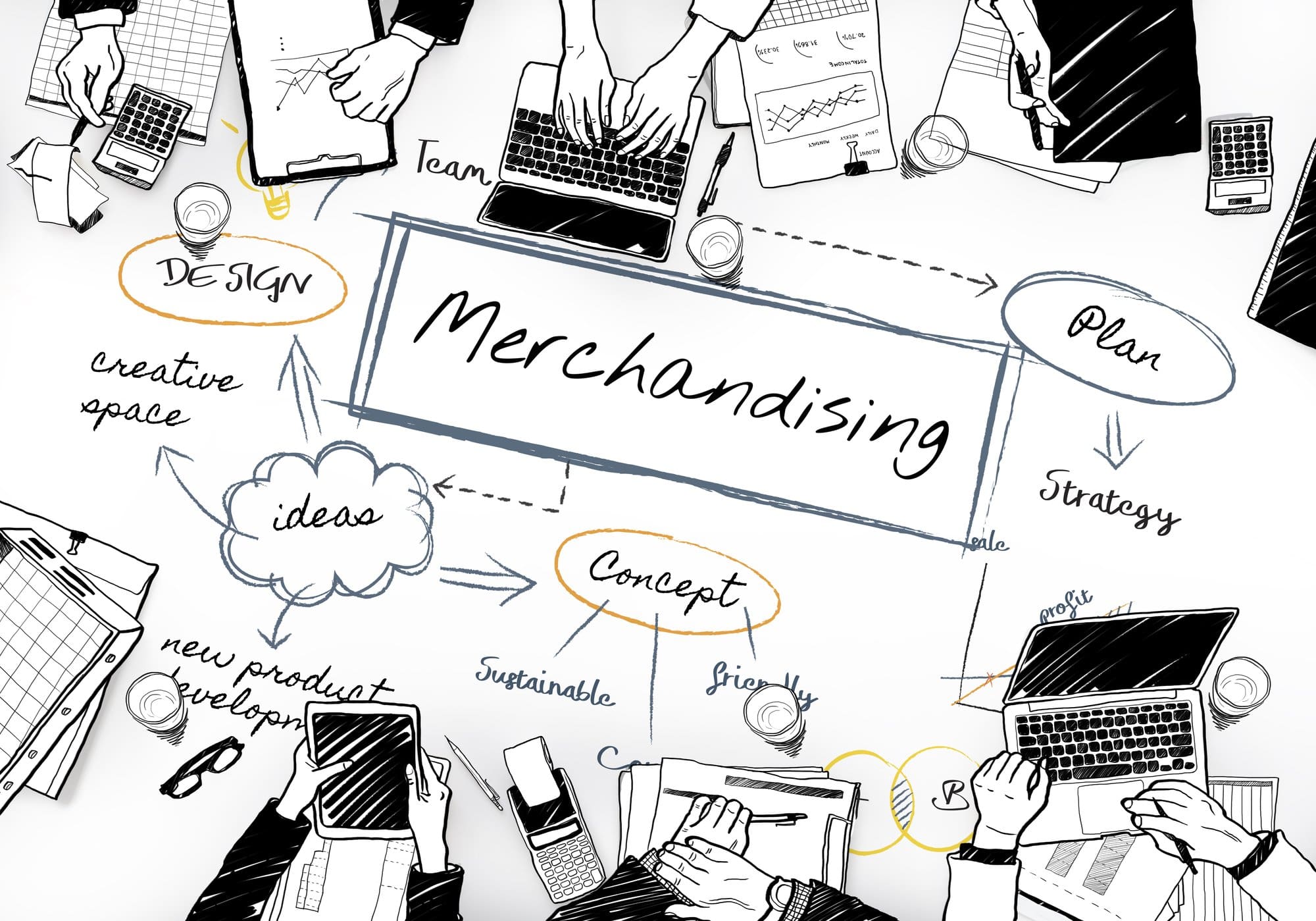 Merchandising is a broad term that includes most business actions. From marketing strategies to packaging, pricing, temperature, store layout, and loss prevention. Merchandising is the art of creating a cohesive package that makes people want to buy your products or services.
Here’s a more full list of the aspects covered under merchandising:
[su_note note_color="#dbeafc"]
Merchandising is a broad term that includes most business actions. From marketing strategies to packaging, pricing, temperature, store layout, and loss prevention. Merchandising is the art of creating a cohesive package that makes people want to buy your products or services.
Here’s a more full list of the aspects covered under merchandising:
[su_note note_color="#dbeafc"]
 Visual merchandising is used in a retail setting to help make it more pleasant for shoppers. Four elements to enhance visual merchandising, including:
Visual merchandising is used in a retail setting to help make it more pleasant for shoppers. Four elements to enhance visual merchandising, including:
 Fashion merchandising focuses on increasing retail sales for clothing. That’s why layaway sections are always hidden somewhere out of the way, but the newest trends are right there when you walk in the door.
Make sure you’re showing off your high-profit and most desirable products near walkways and entrances, but make sure no one can steal them. We’ll talk about security later.
Fashion merchandising focuses on increasing retail sales for clothing. That’s why layaway sections are always hidden somewhere out of the way, but the newest trends are right there when you walk in the door.
Make sure you’re showing off your high-profit and most desirable products near walkways and entrances, but make sure no one can steal them. We’ll talk about security later.
 A merchandising strategy is simply a business plan about how to present your brand and products. It will cover a large variety of subjects.
You’ll want to document:
[su_note note_color="#dbeafc"]
A merchandising strategy is simply a business plan about how to present your brand and products. It will cover a large variety of subjects.
You’ll want to document:
[su_note note_color="#dbeafc"]
 Stores use psychology all the time to maximize their profits. Some of them are obvious, but some are not. Here are some of the pricing strategies merchandisers use:
Stores use psychology all the time to maximize their profits. Some of them are obvious, but some are not. Here are some of the pricing strategies merchandisers use:
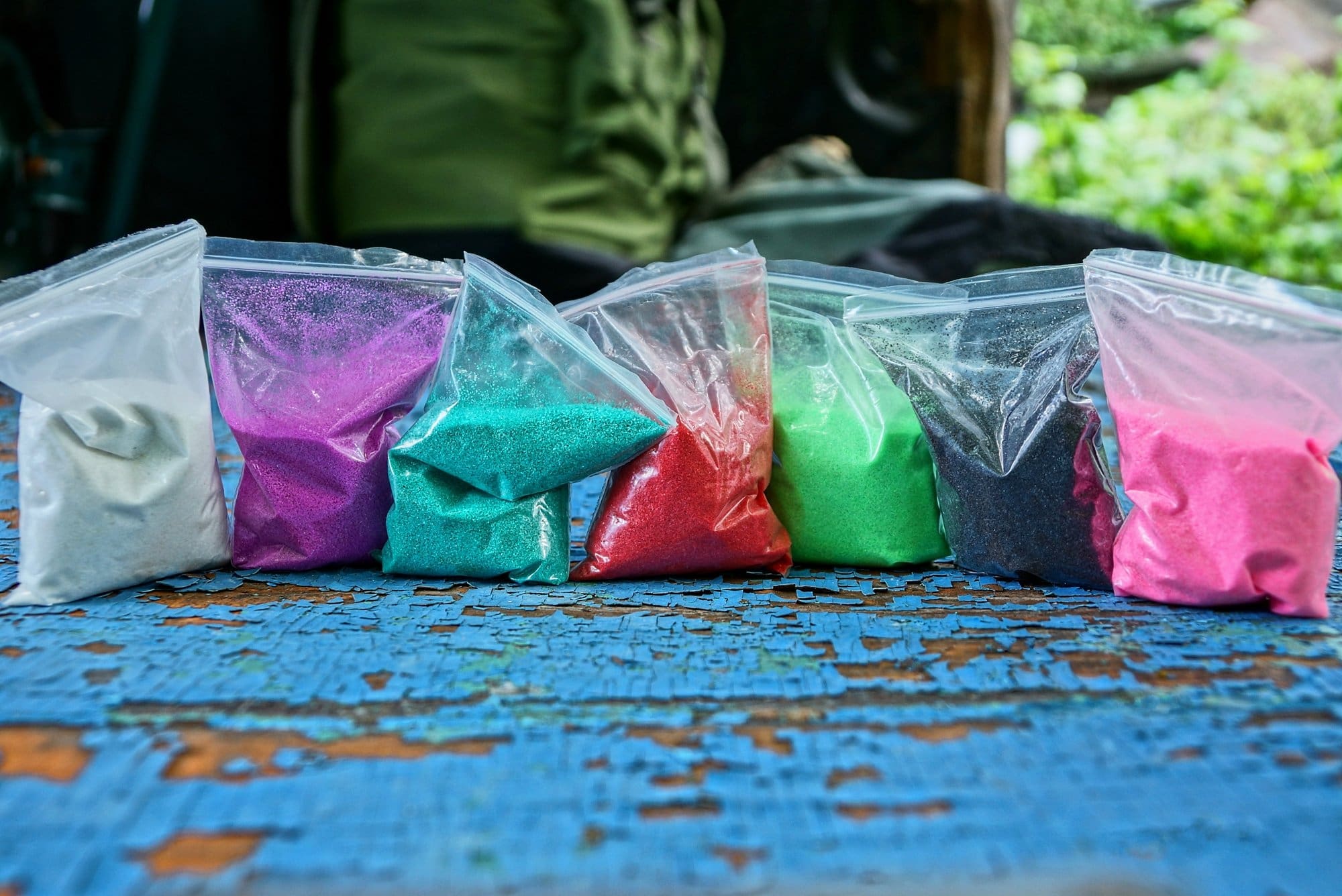 How you package your products matters. If you’ve ever bought a ticket to a concert, I bet it didn’t look like this. The design definitely impacts your perception of what to expect, right?
A Swedish study found that if you are a brand, the expectations for packaging are higher than for resellers. Meanwhile, other studies found that better packaging increases the perceived value by 49% even if it only costs $.19 more.
Phase1 Prototypes suggests a few strategies to help increase the perceived value:
How you package your products matters. If you’ve ever bought a ticket to a concert, I bet it didn’t look like this. The design definitely impacts your perception of what to expect, right?
A Swedish study found that if you are a brand, the expectations for packaging are higher than for resellers. Meanwhile, other studies found that better packaging increases the perceived value by 49% even if it only costs $.19 more.
Phase1 Prototypes suggests a few strategies to help increase the perceived value:

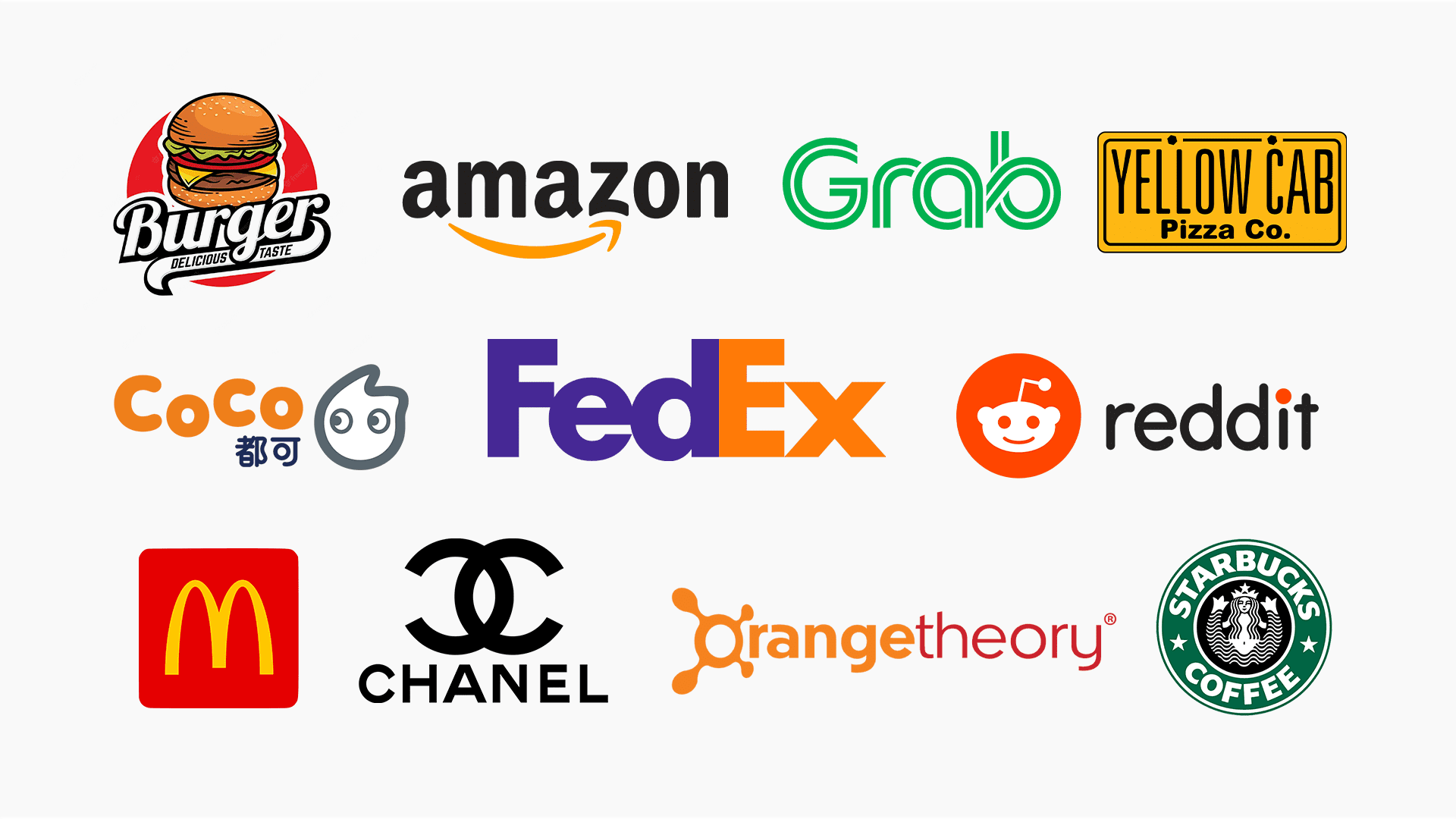 If you are a brand, your logo should be a central focus in your merchandising. You want it to be simple but meaningful. It doesn’t have to be perfect from the start, but it should represent your brand and your values.
Effective merchandising has a logo on everything. From a retail display to your business’s online store to the products and packaging, everyone should be able to tell what company you are. If they can’t, then the merchandising strategies aren’t working.
Check out some of the logos for these companies:
If you are a brand, your logo should be a central focus in your merchandising. You want it to be simple but meaningful. It doesn’t have to be perfect from the start, but it should represent your brand and your values.
Effective merchandising has a logo on everything. From a retail display to your business’s online store to the products and packaging, everyone should be able to tell what company you are. If they can’t, then the merchandising strategies aren’t working.
Check out some of the logos for these companies:

 A small business can use color palettes in merchandising to create different atmospheres. Most brands use two or three colors in their logos and will commonly use those colors in their merchandising.
Colors tend to be associated with emotions, and you can use that to your store's advantage. Check out these resources about color:
A small business can use color palettes in merchandising to create different atmospheres. Most brands use two or three colors in their logos and will commonly use those colors in their merchandising.
Colors tend to be associated with emotions, and you can use that to your store's advantage. Check out these resources about color:
 They offer good quality at competitive pricing, use a unique in-store layout to encourage purchases, create a customer experience that is one of a kind, and have nearly four times the sales as their largest competitor.
Check out the CNBC case study on Ikea below:
They offer good quality at competitive pricing, use a unique in-store layout to encourage purchases, create a customer experience that is one of a kind, and have nearly four times the sales as their largest competitor.
Check out the CNBC case study on Ikea below:
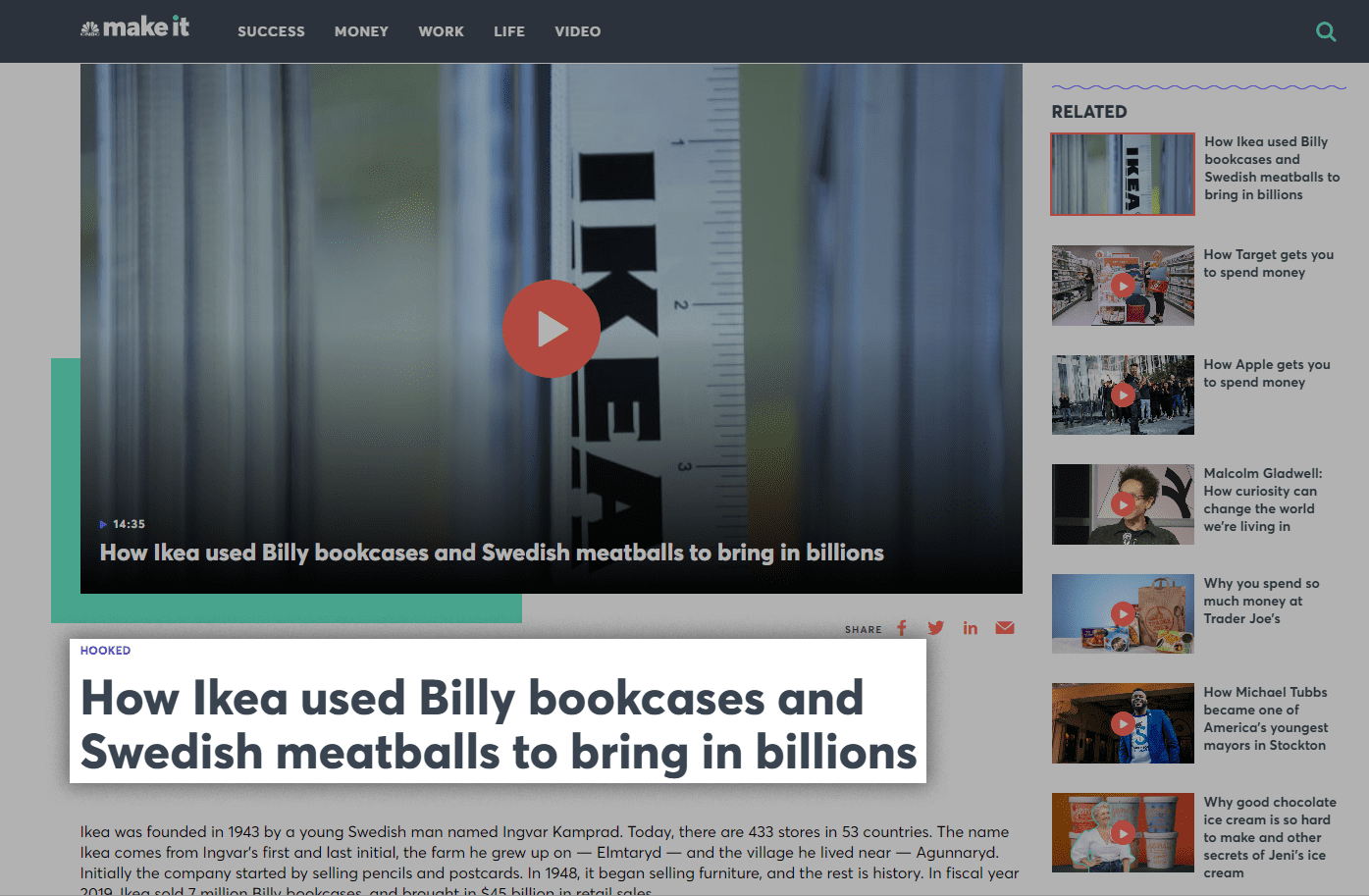
 Yes. Resellers can be home-based businesses, but it really depends on your living situation. Each local jurisdiction and homeowners association may have policies about whether you can start a business from home. Tia told us:
[su_quote]I started Sneak City out of my parents’ garage, but had to get my own shop after it started taking up too much space.[/su_quote]
You might also want a shop if you have a large local customer base. Letting them pick up locally can improve the customer experience and reduce your business costs like gas and shipping.
Yes. Resellers can be home-based businesses, but it really depends on your living situation. Each local jurisdiction and homeowners association may have policies about whether you can start a business from home. Tia told us:
[su_quote]I started Sneak City out of my parents’ garage, but had to get my own shop after it started taking up too much space.[/su_quote]
You might also want a shop if you have a large local customer base. Letting them pick up locally can improve the customer experience and reduce your business costs like gas and shipping.
 To become a reseller, you’ll need to:
To become a reseller, you’ll need to:
 Another popular product category for resellers is clothing and accessories. This includes items like shoes, handbags, jewelry, and clothing. Resellers can purchase these items in bulk from manufacturers or wholesalers and sell them at a markup to customers.
Ryan Hogue resells clothes on his ecommerce store using print-on-demand. Check out our interview with him below.
Another popular product category for resellers is clothing and accessories. This includes items like shoes, handbags, jewelry, and clothing. Resellers can purchase these items in bulk from manufacturers or wholesalers and sell them at a markup to customers.
Ryan Hogue resells clothes on his ecommerce store using print-on-demand. Check out our interview with him below.
 Finally, services can also be resold. This includes things like web design, marketing, and consulting services. Resellers can partner with service providers and sell their services to customers at a markup. This can be a lucrative and profitable business model for those with expertise in a particular area.
The products and services that can be resold are virtually endless. The key is finding a product or service with high demand and a good profit margin. By building the right relationships with suppliers, you'll be on your way to becoming a successful online reseller yourself.
Now that you have an idea of how to find suppliers, let’s look at getting customers.
Finally, services can also be resold. This includes things like web design, marketing, and consulting services. Resellers can partner with service providers and sell their services to customers at a markup. This can be a lucrative and profitable business model for those with expertise in a particular area.
The products and services that can be resold are virtually endless. The key is finding a product or service with high demand and a good profit margin. By building the right relationships with suppliers, you'll be on your way to becoming a successful online reseller yourself.
Now that you have an idea of how to find suppliers, let’s look at getting customers.
 You can begin by identifying your niche. This involves determining the specific product categories or industries you want to focus on. By specializing in a particular niche, you'll better understand your target customers and the products they're searching for, making it easier to cater to their needs.
You can begin by identifying your niche. This involves determining the specific product categories or industries you want to focus on. By specializing in a particular niche, you'll better understand your target customers and the products they're searching for, making it easier to cater to their needs.
 A reseller business plan should:
[su_note note_color="#dbeafc"]
A reseller business plan should:
[su_note note_color="#dbeafc"]
 For those of you who want to sell your own products or other companies new products, you'll want to research reliable wholesale suppliers or manufacturers to source products. Look for industry-specific directories or databases that list suppliers and manufacturers in your niche. You can also use search engines to find potential suppliers and manufacturers.
Some of the popular ones are:
For those of you who want to sell your own products or other companies new products, you'll want to research reliable wholesale suppliers or manufacturers to source products. Look for industry-specific directories or databases that list suppliers and manufacturers in your niche. You can also use search engines to find potential suppliers and manufacturers.
Some of the popular ones are:
 Once you have a list of potential suppliers or manufacturers, it's important to vet them thoroughly.
Be sure to read reviews and check their ratings on platforms like Google, Yelp, or the Better Business Bureau to ensure they have a good reputation. Then, check their credentials, such as licenses, certifications, and insurance. Ask for references and contact them to learn about their experiences working with the supplier or manufacturer. Check out this article on vetting suppliers.
Once you have a list of potential suppliers or manufacturers, it's important to vet them thoroughly.
Be sure to read reviews and check their ratings on platforms like Google, Yelp, or the Better Business Bureau to ensure they have a good reputation. Then, check their credentials, such as licenses, certifications, and insurance. Ask for references and contact them to learn about their experiences working with the supplier or manufacturer. Check out this article on vetting suppliers.
 Finally, feel free to negotiate with your suppliers or manufacturers. Ask about their pricing, minimum order quantities, and shipping options. Define your expectations and requirements, then make sure you have a written agreement before purchasing products. Rocket Lawyers has free manufacturing contract templates.
With these tips, you can find reliable suppliers or manufacturers to help you become a successful reseller.
Finally, feel free to negotiate with your suppliers or manufacturers. Ask about their pricing, minimum order quantities, and shipping options. Define your expectations and requirements, then make sure you have a written agreement before purchasing products. Rocket Lawyers has free manufacturing contract templates.
With these tips, you can find reliable suppliers or manufacturers to help you become a successful reseller.
 With the right strategy and execution, anyone can become a successful reseller.
You’ll want to consider multiple ways of selling your resale products when you start a reselling business. Some of the most common ways of selling include:
With the right strategy and execution, anyone can become a successful reseller.
You’ll want to consider multiple ways of selling your resale products when you start a reselling business. Some of the most common ways of selling include:
 Marketing your reseller business involves:
Marketing your reseller business involves:
 Choosing the best inventory management and sales software for resellers depends on various factors such as budget, business size, and specific features needed. Here are some top options:
Each of these services offers a range of features, such as inventory tracking, order management, and shipping management. These tools will help you provide all the necessary documentation to file your taxes. Resellers should evaluate each service based on their specific needs and budget before choosing the right one for their business.
Choosing the best inventory management and sales software for resellers depends on various factors such as budget, business size, and specific features needed. Here are some top options:
Each of these services offers a range of features, such as inventory tracking, order management, and shipping management. These tools will help you provide all the necessary documentation to file your taxes. Resellers should evaluate each service based on their specific needs and budget before choosing the right one for their business.
 To expand your online resale business, consider some of these options.
To expand your online resale business, consider some of these options.
 Inbox
Inbox 
Learn from business failures and successes in 5 min or less. The stories, frameworks, and tactics that will make you a 10x better founder.
 Join our 45,000+ entrepreneurs
Join our 45,000+ entrepreneurs